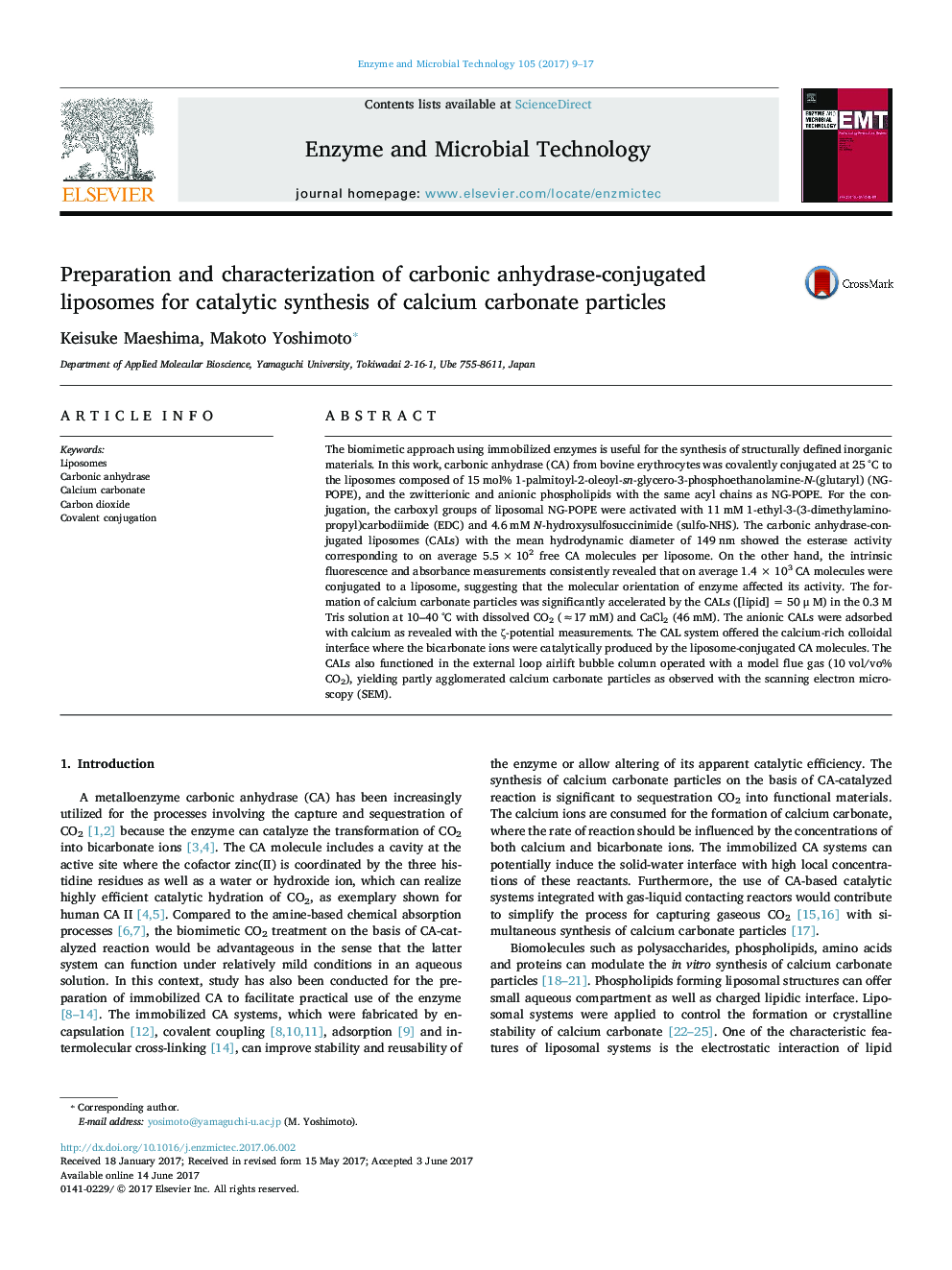| کد مقاله | کد نشریه | سال انتشار | مقاله انگلیسی | نسخه تمام متن |
|---|---|---|---|---|
| 4752729 | 1416366 | 2017 | 9 صفحه PDF | دانلود رایگان |
- Carbonic anhydrase was covalently conjugated to anionic lipid membranes.
- Orientation of liposome-conjugated enzymes affected the enzyme activity.
- Liposomes offered catalytic interface for the calcium carbonate formation.
The biomimetic approach using immobilized enzymes is useful for the synthesis of structurally defined inorganic materials. In this work, carbonic anhydrase (CA) from bovine erythrocytes was covalently conjugated at 25 °C to the liposomes composed of 15 mol% 1-palmitoyl-2-oleoyl-sn-glycero-3-phosphoethanolamine-N-(glutaryl) (NG-POPE), and the zwitterionic and anionic phospholipids with the same acyl chains as NG-POPE. For the conjugation, the carboxyl groups of liposomal NG-POPE were activated with 11 mM 1-ethyl-3-(3-dimethylaminopropyl)carbodiimide (EDC) and 4.6 mM N-hydroxysulfosuccinimide (sulfo-NHS). The carbonic anhydrase-conjugated liposomes (CALs) with the mean hydrodynamic diameter of 149 nm showed the esterase activity corresponding to on average 5.5 Ã 102 free CA molecules per liposome. On the other hand, the intrinsic fluorescence and absorbance measurements consistently revealed that on average 1.4 Ã 103 CA molecules were conjugated to a liposome, suggesting that the molecular orientation of enzyme affected its activity. The formation of calcium carbonate particles was significantly accelerated by the CALs ([lipid] = 50 μ M) in the 0.3 M Tris solution at 10-40 °C with dissolved CO2 (â17 mM) and CaCl2 (46 mM). The anionic CALs were adsorbed with calcium as revealed with the ζ-potential measurements. The CAL system offered the calcium-rich colloidal interface where the bicarbonate ions were catalytically produced by the liposome-conjugated CA molecules. The CALs also functioned in the external loop airlift bubble column operated with a model flue gas (10 vol/vo% CO2), yielding partly agglomerated calcium carbonate particles as observed with the scanning electron microscopy (SEM).
181
Journal: Enzyme and Microbial Technology - Volume 105, October 2017, Pages 9-17
